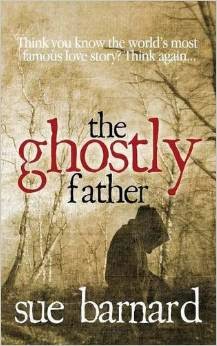When my first book was published in 1992, the internet was in its infancy, ebooks were a glint in some geek’s eye and Amazon was just a sapling. There was no need to develop an online presence as there was no real ‘online’. And anyway, there were bookshops in every high street.
Fast forward twenty-two years and my, how things have changed! Now the proliferation of self and small publishers, advances in digital publishing, the sad demise of local bookshops and the all-pervasive presence of the internet means that any writer who wants to be seen or to promote or sell their work has to use social media platforms. One of my favourite online platforms comes via my blog.
I started the blog on May 12th 2012 principally because I was planning to self-publish an ebook, Jigsaw Pieces. The kind friendly writer mentoring me told me I needed a blog and I always do as I’m told. The first post was read by three people, one of whom (my mentor) was nice enough to comment. Now, the blog regularly gets 500+ hits a week, rising to over 800+ as it travels gently through cyberspace and can elicit as many as 40 comments.
I don’t sell a lot of books via my blog, but that isn’t its primary purpose. It is an outlet for other types of writing; a space where I can share my thoughts on life and stuff and people can read them and get to know me. Hopefully if they like what they read, they THEN might go on to try one of my books.
So what makes a “good’’ blog?
* Posting regularly. I put up a new blog every Saturday morning at 8 am. This encourages a regular reading clientele.
* Responding to comments. People like to know their comments have been read and absorbed by me. Sometimes, whole strings can develop, as people also interact with each other, which is great fun to follow.
* Varying the content. I blog about local politics, my writing processes, the madness of life in general and the Adventures of the 2 Grumpy Old Sods aka me and my husband.
* Using Twitter hashtags. I use these as ways of targeting the blogs at a specific readership. Some tags are obvious : #wwwBlogs are posts written on Wednesday by (largely) women writers.#MondayBlogs opens the door on Mondays. I also use #UKAD, a generic site for all sorts of writers and artists. Or, depending on the content, I may use #histifc for posts about Victorian life, or #amwriting for advice posts.
* Hosting fellow writers. Every month I feature a Guest Post which is a chance not only to draw other people to the blog, but also gives a platform to another writer with a new book to publicise. Supporting my friends is a big part of what I believe in as a writer.
* Eschewing advertising. There is money to be made from selling advertising space on one’s blog. I don’t do this, as it detracts from the content. Also I feel we are bombarded enough with adverts in everyday life.
* Visiting & commenting on other blogs. Essential. Apart from being a polite acknowledgement that someone has taken the time and trouble to comment on mine, it also helps me to become known by the writing/reading community. And there are some great posts out there.
* Writing guest posts. A great honour, as well as another opportunity to get out and presence myself somewhere else. Unless absolutely snowed under with life, I never turn down an invitation because who knows who may be reading my words?
If you would like to download a free sample of Diamonds&Dust, A Victorian Murder Mystery, you can do so here. US readers can do so here
If you would like to download a free sample of Diamonds&Dust, A Victorian Murder Mystery, you can do so here. US readers can do so here
.jpg)






